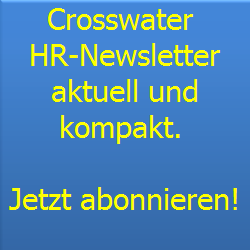Job Boards Aren’t Dead, Just Different.
Autor: Matt Charney, Snark Attack.
Originally published at Recruiting Daily.
Innovation and competition have always gone hand in hand, and the recruiting technology industry has historically been no exception to this rule. One has to look no further than only a few years back to see evidence of a trend that, like most history, seems to be repeating itself, as “job boards” rebrand, retool and reinvent their positioning – forgetting that other maxim that those who forget the past are doomed to repeat it.
Which might explain why we still suck at candidate experience.

But let’s take the wayback machine to a simpler time: the early 2000s. And during the dot com days, when job boards were still in their infancy, online recruitment was more or less dominated by three major players. Two are still around, and the past competition between these two players can only be seen, like most retrospectively applied analysis, as prologue to the next great battle for the hearts and minds of those on the frontlines of the proverbial war for talent.
The Battle of the Boards.
In 2004, Monster (8.6%), CareerBuilder (8.1%) and HotJobs (6.1%) were responsible for approximately 22% of all external hires, according to that year’s Career XRoads Source of Hire Report. The overall share of hires attributed to job boards hasn’t changed significantly in the intervening decade, according to the 2014 report, slipping to 15.4% of all external hires.
Sure, this is a slight slip but still, as sources go, nothing to sneeze at, statistically speaking, unlike social, which was not measured as an independent source of hire in 2004 but had still only managed to eke out around 3% of external hires (likely an overinflated number) a full decade later.
The real story, however, lies not in these specific sources of hire and the fragmentation of the job board category into hundreds of niche, emerging and established competitors, but rather, what a trend towards consolidation through aggregation means for the future of online recruiting and job search.
Because even though the big boards managed to survive social, search and mobile more or less unscathed – in fact, one could argue this segment has done a better job keeping pace with consumer trends and customer demand than any other category within HR Technology – the industry is on the verge of being disrupted by its own business model and revenue generation strategies.
That’s because while Monster and CareerBuilder were busy fighting it out for supremacy, paying literally hundreds of millions of dollars to acquire traffic, users and relative market share from each other (and, increasingly, the Death Star that is LinkedIn), they overlooked the far bigger threat to their continued survival – a threat created by a business model they, themselves, created.
Human Resources Trafficking.
In fact, Monster’s “acquisition” of HotJobs from Yahoo! in 2010 for a cool $225 million was really just what amounted to a three year lease of Yahoo! career related traffic, with the core HotJobs brand and platform quickly sunsetted after the close of the acquisition. Consider this sum today is about half of Monster Worldwide’s overall overall market cap, meaning this was one epic failure, but a pretty good cautionary tale of how not to effectively scale or build a long term strategy that’s any longer than a single SEC filing period.2
 That’s because the business model that precipitated this poorly conceived and even more poorly executed acquisition is one that’s predicated almost entirely on traffic. Monster’s Career Ad Network, which serves up retargeted career content across a multitude of sites using beaconing and behavioral targeting, is a significant source of their revenue, as is CareerBuilder, which spends millions of dollars a year on SEO and SEM for its job listings in an attempt to drive enough qualified applicants to justify the premium recruiters pay for what is, essentially, a proprietary third party resume database and publishing platform.
That’s because the business model that precipitated this poorly conceived and even more poorly executed acquisition is one that’s predicated almost entirely on traffic. Monster’s Career Ad Network, which serves up retargeted career content across a multitude of sites using beaconing and behavioral targeting, is a significant source of their revenue, as is CareerBuilder, which spends millions of dollars a year on SEO and SEM for its job listings in an attempt to drive enough qualified applicants to justify the premium recruiters pay for what is, essentially, a proprietary third party resume database and publishing platform.
In this game, Glassdoor has actually emerged as the winner, with growth far outpacing other online recruitment marketing destinations in North America as of April 2015 (see above), although overall volume still lags well behind LinkedIn and Indeed (although it has in fact beat CareerBuilder’s combined traffic for the last three months, a trend that’s likely to hold). It doesn’t take a genius to figure out how this happened.
Notice how CareerBuilder’s recruitment marketing solutions categorization pretty much mirrors the structured data required to initiate a targeted AdWord campaign, right down to its predefined industry segmentation and localization options. You don’t have to be a genius to figure out how money gets made on the margins of giant PPC buys given the volume discount spending such profligate sums on advertising inevitably leads to – a good business model that’s pretty much a bait and switch.
Which is why LinkedIn, with a similar model predicated on ad sales around career content and paid search licenses, was never a true threat, since the only difference between LinkedIn and traditional job boards lay not in its revenue models, but in brand marketing.
Call it a “professional network,” and instead of the few hundred bucks a job post goes on a board even when buying ala carte, and suddenly you can get away with charging inordinate amounts of cash for a LinkedIn Recruiter seat license – one customer cited a $2 million price tag as an extreme example for enterprise access the Mountain View based evil empire has gotten away with charging major enterprise customers in the past.
Editor’s Note: An earlier version reported that LinkedIn was charging up to $2 million per seat license, which the company denies; LinkedIn has acknowledged, however, that this pricing is consistent with “the total contract value” for an enterprise customer. In other words, there are companies investing millions of dollars on a single source of hire annually through LinkedIn spend.
This is, naturally, negotiable, as the same head of global talent acquisition, who asked to be quoted off the record, revealed that same license went down in cost from $2 million a head to $200k simply when she recently switched companies, and with it, account reps and contract terms. This lack of consistent pricing reeks of desperation to get clients to sign on the dotted line, as well as a complete and utter ignorance over what, if anything, their product is actually worth.
This is because LinkedIn would really you rather not ask any pesky ROI questions, which, to Monster and CareerBuilder’s credit, they do a much better job providing to customers – which explains why honesty isn’t always the best policy, since their objective reporting has likely cost them business since LinkedIn has created its own “professional network” playing field instead of competing head to head with cheaper, more effective competitors.
At least you know what you’re getting and what you’re paying for with a job board contract, and these companies tend to honor contracts or at least don’t silently and suddenly sunset access to previously free feature sets whenever they have to report earnings or growth metrics to the market. But with LinkedIn, it’s that same hubris and willingness to bite the hand that feeds it that has turned recruiters sour on their “talent solutions” and hesitant to renew and pay an exorbitant fee for a license with a mixed track record of delivering consistent ROI.
With growth plateaued, and the license for their enterprise recruiter product (and cash cow) is pretty much maxed out as far as short term gains likely go – the reason investors are taking a similarly negative outlook as talent acquisition pros, but for a much more obvious reason: since they monetize like a job board, they’ve got to compete like a job board, which means heavy investments into paid display ads and AdWord targeting (not to mention costs incurred in the pricey organic arms race for broadtail career related keyword supremacy).
LinkedIn, Monster and CareerBuilder have all tried to fight the job board label, and in doing so, have rightly realized that owning search is the only way to truly own online recruiting.
Get Down With PPC. Yeah, You Know Me.
The traditional job boards, in their evolution, have obviously tacitly acknowledged the value in driving traffic and making margins off of more or less becoming intermediaries between job seeker and employer, becoming a source of hire and thus delivering for any traffic that ends up finding them, first. This means winning the best rank on the same search results on the same search engine that 85% of all career related online activity begins.
It’s that prevailing consumer trend that’s not only trickled down to every recruiting technology roadmap, but one that’s changed the competitive landscape from the traditional job board model to one heavily skewed towards two emerging platforms who realized the value of deduplication and aggregation early on.
These early adopters realized they could beat job boards at their own game, scraping and throwing up a gate over the content that was formerly prime real estate for recruitment marketing, inserting themselves as indispensable and integral components of the modern recruiting landscape.
These two companies, each with slightly different models for monetizing search but still capitalizing off their smart traffic and user acquisition strategies, are firmly squaring up for a showdown that should make even Monster vs. CareerBuilder look pretty tame by comparison. The repercussions – and outcome – of this two horse race, meanwhile, look to have significant repercussions for the short and long term future of recruiting and job search – and the allocation of the billions of dollars employers of spend invest annually in these talent acquisition solutions.
Indeed vs. Glassdoor: The Gloves Come Off.
After attending the Indeed Interactive user conference last month in Austin, where this often enigmatic closely held company unveiled its product portfolio and strategic direction, I can safely say that the war for talent (technology) has come down to a battle royale between Indeed and Glassdoor. And I couldn’t be more excited.
Sorry, LinkedIn. “Professional networks” are passé these days. And Monster and CareerBuilder have recently announced they’re moving from distributing content to scraping it and moving towards the same pay for performance model as Glassdoor and Indeed have always had in place, but both far lag the market leaders in their attempt to become “aggregators” themselves, a tacit acknowledgement that their days with their current business model are likely numbered.
While all try to figure out what to do – LinkedIn looks like it’s trying to become some sort of crappy content marketing platform while it figures out what to do with the firehose of misappropriated PID that represents its only real asset, while Monster has doubled down on semantic and federated search (a smart play) through its 6Sense and TalentBin products, both of which are among the most sophisticated on the market.
CareerBuilder, meanwhile, looks to be making a play for the ATS and CRM space with its CareerBuilder 1 platform, aggressive integration roadmap and heavy investment in continuing to build the industry’s best looking and most user friendly recruitment analytics platform, making the move to being data and source agnostic in a seriously smart shift in overall strategy.
This is because the market for recruitment advertising has already shifted to Indeed and Glassdoor, largely due to the fact that both are producing better results at a far cheaper cost per hire than any alternative source save referrals and internal mobility.
Of course, the future direction of both platforms is predicated on more or less productizing both sources at scale – hence the emphasis on company reviews, employee ratings and selling employers control of their own branded pages as a primary revenue source.
These have become extremely valuable real estate on both platforms, with traffic and consumer adoption rates so high that Indeed and Glassdoor are able to price employers’ ability to control their own branded presence on these sites at a steep premium.
It’s a direct cost that’s still a comparative bargain and far more effective than LinkedIn or niche online communities like Dice while driving far more traffic to employers’ paid job listings as the job boards they’re paying to post on in the first place.
Job Boards Aren’t Dead. Just Different.1
The major distinction that I see between the two companies after the Indeed Interactive event is where each falls in the recruiting funnel – Indeed generally coming at the onset of a search to find out who’s hiring, and Glassdoor generally being leveraged a little later to find out more information about the companies that they’ve previously identified via Indeed.
Indeed, however, seems to be making a huge play for Glassdoor, rolling out new offerings aimed at “increasing transparency” that, in transparency, are obviously gunning for the one company that it accurately perceives as a potential competitor.
This included announcing such products as employer branded microsites, premium placement for onsite listings and an increased emphasis on user reviews. The third seems the most obvious play in Glassdoor’s backyard, but the thing is, Indeed has always offered a company review feature – just for some reason, it’s never been able to overcome Glassdoor’s momentum in gaining the critical mass requisite to make these reviews effective.
 They’re actually not late players to this game, although it’s interesting to see them retrench on a product that’s been there since well before Indeed was acquired by Recruit, a Japanese online recruiting firm so dominant on its home turf that it spawned a corruption scandal that toppled a Prime Minister and his entire government in the ensuing.
They’re actually not late players to this game, although it’s interesting to see them retrench on a product that’s been there since well before Indeed was acquired by Recruit, a Japanese online recruiting firm so dominant on its home turf that it spawned a corruption scandal that toppled a Prime Minister and his entire government in the ensuing.
That’s the kind of evil power LinkedIn can only dream of – and also the source of the deep pockets that are able to keep pace with Glassdoor, a darling of the VC scene who recently raised a whopping $70 million in extra funds from Google Capital, among other partners, in January. This pushed their overall funding to $160 million, or about half as much as a job board used to cost to acquire third party traffic only a few short years ago.
With this valuation, were an IPO imminent, it would likely spell the reevaluation, readjustment and collapse of LinkedIn and all other publically traded companies in the recruiting advertising space (this does exempt CareerBuilder, which has always been a privately held and closely funded joint venture).
As is, it means they’ve got a boat load of cash and a pretty good strategic partner for dominating search and owning the source of hire competition – one that, coincidentally, Indeed won for the first time in 2014, but Glassdoor seems uniquely positioned to challenge and ultimately close what’s become a fairly growing source of hire gap created by Indeed’s hockey stick user growth metrics.
Indeed, conversely, seemed at its #IndeedInteractive user event to be using a well worn page straight from Glasssdoor’s playbook, positioning its offerings as a truly “transparent” and “authentic” source for job information and postings while somewhat deftly disguising the fact that it, like Glassdoor, makes most of its money off of the decidedly unsexy, but decidedly profitable, business of premium placements and sponsored posts.
But it’s kind of fun to see Indeed company reviews on Glassdoor – and Glassdoor employee reviews on Indeed – to see just how “transparency” truly operates in the war for billions in online recruiting spend, particularly when both companies are hiring tech talent as fast as they can to keep up with their extreme growth without being penalized for any associated growing pains when it comes to their onsite employer brand. Hey, as they say, shit talks, money walks, and you’d be smart backing either of these two talent technology plays for the foreseeable future.
The collision, of course, comes at the center of the ven diagram between both business models: employer branding. Surprise, recruiting and marketing coming together is creating friction and disruption within traditional talent acquisition models.
All I can say is, game on.








